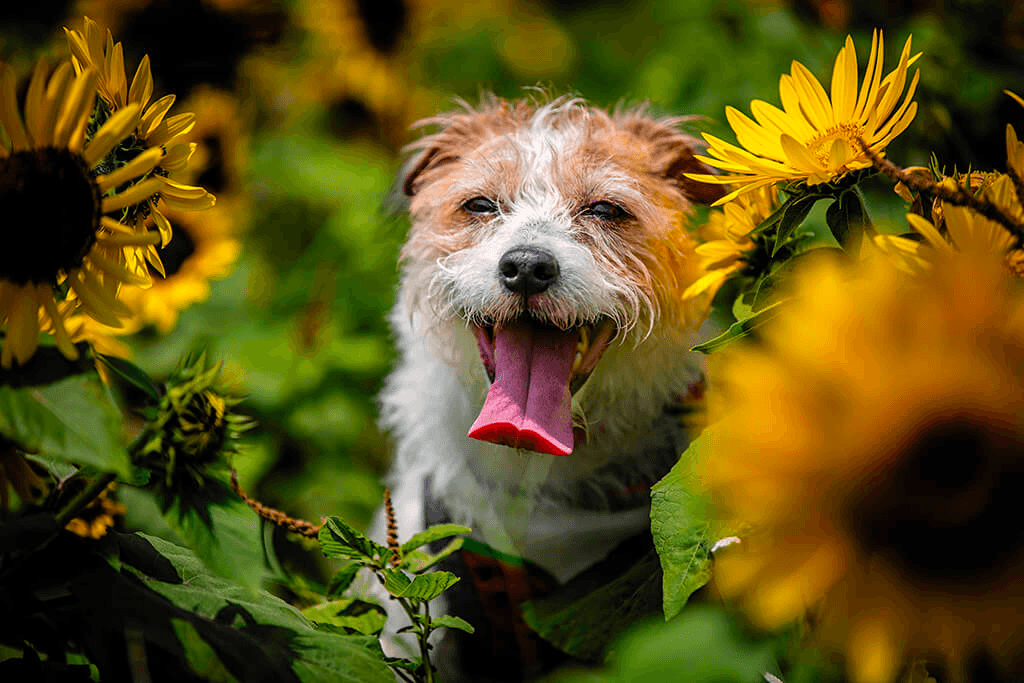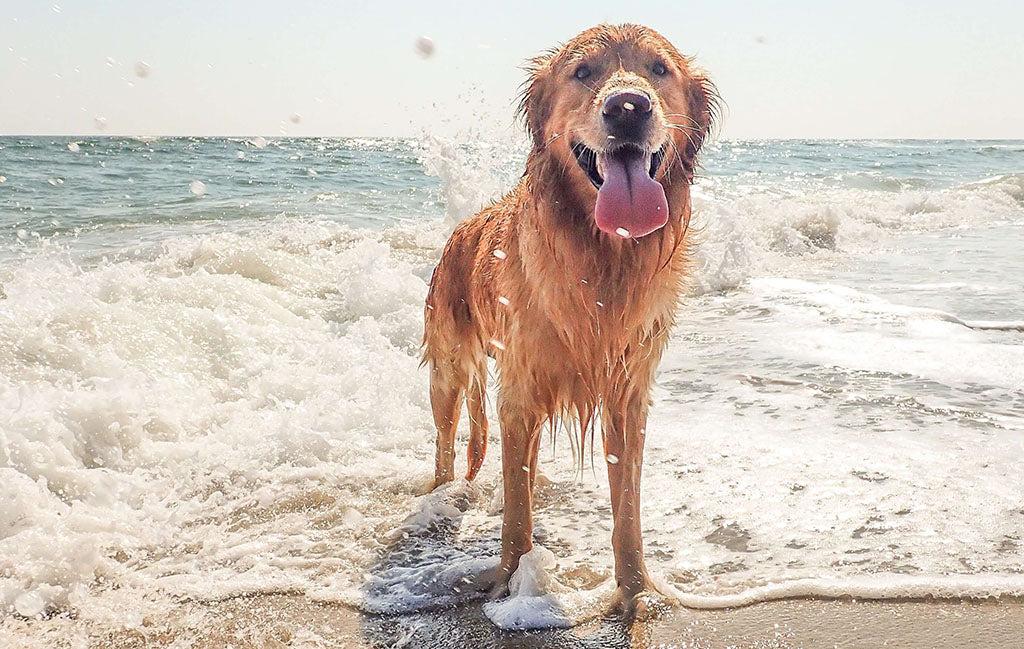Dr Carol Bryant explains which 6 telltale signs to look out for if you think your dog might be constipated.
Is My Dog Constipated? 10 Telltale Signs of Constipation in Dogs

Quick takeaway: When a dog is constipated they are struggling to poop and may either fail to do so, or stain to pass stool that is not a normal color, consistency or has an unhealthy coating. Dogs with constipation may show signs of scooting, or licking their rears. They may pass dry, hard stools or have a decreased appetite. If you see signs like this in your dog, make sure to contact your vet for advice.
10 Telltale Signs Your Dog May Be Constipated:
- Not pooping for several days: If your dog hasn’t had a bowel movement in a couple of days, it may be a sign that things aren’t moving through the digestive system as smoothly as they should. Keep an eye on their behavior and reach out to your vet if it continues.
- Straining without resulting in poop: Repeatedly trying to poop without success, especially if your dog keeps squatting or circling with no result, could indicate they’re struggling to pass stool.
- Whimpering, yowling, or vocalizing whilst attempting to defecate: If your dog is making noises like whimpering or yelping when trying to poop, it could suggest they’re experiencing discomfort. It’s always a good idea to check in with your vet if this happens more than once.
- Scooting or licking around the anal area: If your dog is scooting across the floor or excessively licking their rear, it may be a sign they’re having trouble passing stool or feeling discomfort around the anal glands.
- Dry, hard stools: Stools that are small, dry, or pebble-like can indicate that waste is sitting too long in the colon, where more moisture is absorbed than usual.
- Decreased appetite: If your dog is turning down food or showing less interest in meals, it could be related to digestive sluggishness or a feeling of being backed up.
- Lethargy or general fatigue: Constipation may cause your dog to seem more tired or less playful than normal, especially if they’re feeling uncomfortable or bloated.
- Abdominal discomfort: Look for signs like pacing, stretching, whining, or appearing tense when touched around the belly — these could all signal your pup isn’t feeling their best.
- Coating on poop: If your dog’s stool is bloody, or mucus is present, this can signal constipation.
- Vomiting: In some cases, constipation can make a dog feel nauseous or cause vomiting if waste isn’t moving properly through the system.

How To Tell If Your Dog is Constipated: Advice from a Vet
It’s normal for a dog to poop between 2-4 times a day. However, occasionally a dog may not poop for around 24 hours. If your dog has gone less frequently than this, they may be having some bowel trouble.
Dr. Elizabeth Tancredi of VCA Venture Animal Hospital says constipated dogs may posture to poop without success. She says small amounts of poop may come out that look normal, or it may be smaller and harder than their baseline normal poop.
“Most dogs produce stool at least once a day and often more frequently, usually sort of corresponding to the number of meals they eat,” according to Dr. Silene St. Bernard, Regional Medication Director, VCA Animal Hospitals. “If your dog is constipated, you may notice your dog trying to pass stool without success, straining or otherwise acting a bit uncomfortably.”
What Your Dog’s Poop Should Usually Look Like
Normal, healthy dog poop is chocolate brown and firm, but not hard. If you are seeing signs of constipation in your dog, for instance if your dog has been struggling to poop for more than a day, or they seem visibly uncomfortable and you’re concerned about their wellbeing, it’s important to contact your vet.
PetLabCo Tip: If you notice blood when your dog strains to defecate or hasn’t had a bowel movement in over 48 hours, see a veterinarian.
FAQs: How To Tell if Your Dog is Constipated
Q: Is my Dog Constipated? How Can I Tell?
Common signs of constipation in dogs may include infrequent or difficult bowel movements, straining, dry or hard stools, scooting, or discomfort around the abdomen. Some dogs may also appear tired or uninterested in food. If you think your dog might be constipated and your dog has not pooped for several days, it is important to contact your vet and seek support.
Q: What Are The Most Common Signs of Constipation in Dogs?
Common signs of constipation in dogs are usually easy to spot once you know what to look for. Here are the most typical signs pet parents notice:
Most Common Signs of Constipation in Dogs:
- Decreased appetite or a slightly “off” mood: Dogs experiencing digestive discomfort may seem less energetic or less interested in food.
- Straining to poop: Your dog may squat repeatedly with little or no stool produced.
- Hard, dry, or pebble‑like stools: This is one of the clearest indicators that stool has stayed in the colon too long.
- Less frequent bowel movements: Some dogs normally poop once or twice a day—if your dog hasn’t gone in 24–48 hours, take note.
- Discomfort when passing stool: Whining, pacing, or appearing tense when trying to poop can signal constipation.
- Excessive licking of the rear end: Dogs sometimes lick the anal area because it feels irritated or uncomfortable.
- Scooting: While often associated with anal gland issues, scooting can also occur when a dog feels pressure or discomfort.
- Bloated or firm abdomen: A swollen or tight stomach may appear if stool is building up.
Q: When should I take my dog to the vet for constipation?
If your dog hasn’t had a bowel movement in more than 48 hours, appears in pain, is vomiting, or showing signs of significant discomfort, it’s important to contact your veterinarian. These symptoms may indicate something more than mild constipation.
Conclusion: Is My Dog Constipated? How To Spot The Signs
f your dog is straining to poop, producing small or hard stools, or going longer than usual without a bowel movement, they may be showing signs of constipation. While occasional irregularity isn’t uncommon, it’s important to pay attention to any changes in your dog’s bathroom habits, posture, or comfort level.
Monitoring these signs closely can help you catch potential issues early and give your pup the gentle support they may need. If you’re unsure or notice ongoing discomfort, always reach out to your veterinarian—they can help guide next steps and rule out anything more serious.
When spotted early, occasional constipation can often be supported with simple at-home changes, including hydration, movement, and consistent wellness routines. And remember: your dog’s digestion is a key part of their overall comfort, so staying informed is one of the best things you can do for their daily health.
 C
C



